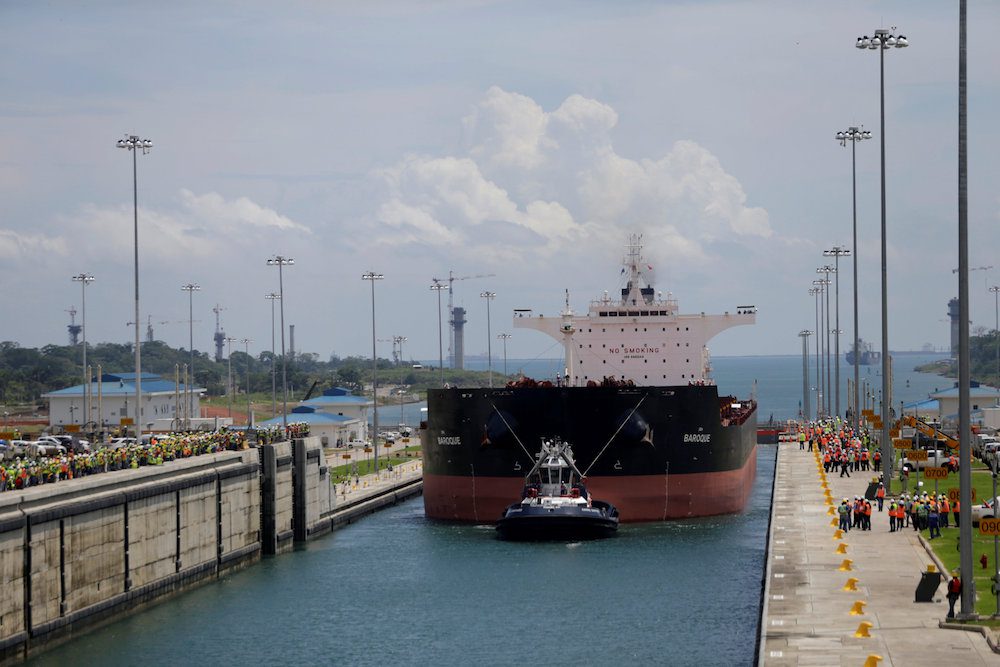A post-Panamax bulk carrier during a trial of Panama Canal’s new Neopanamax locks on the Atlantic side of the Panama Canal, in Panama City, Panama, June 9, 2016. REUTERS/Carlos Jasso
 By Ana Mano SAO PAULO, April 2 (Reuters) – Brazilian port operators including units of global grain traders Cargill Ltd and Bunge Ltd will unveil a proposal this week to lower Panama Canal tariffs and cut their costs in shipping agricultural commodities to their main market China.
By Ana Mano SAO PAULO, April 2 (Reuters) – Brazilian port operators including units of global grain traders Cargill Ltd and Bunge Ltd will unveil a proposal this week to lower Panama Canal tariffs and cut their costs in shipping agricultural commodities to their main market China.
They will argue that at current tariffs, shipping grains from Brazil’s northern ports via the Cape of Good Hope is almost $206,000 cheaper on a per-ship basis than using the Canal, despite the shorter distance.
In a study to be presented at a conference in Panama City on Thursday, the private port operators association ATP will propose using the idle capacity of the old Panama Canal instead of the congested large new locks opened in 2016 for Panamax ships.
This could potentially cut shipping costs and shorten journey times by 4-5 days between Brazil, the world’s leading soybean supplier, and the Chinese and other Asian markets, according ATP, of which Cargill, Bunge, Brazil’s grain trader Amaggi and pulp and paper producer Suzano Papel e Celulose SA are members.
The operators hope their proposal will open the way for talks between Brazil and Panama to find a way to slash tariffs.
“It is good for both sides, because today Panama no longer receives a significant number of Brazilian grain ships bound for China due to the inexistence of a tariff agreement,” Luciana Guerise, ATP executive director, said in a statement sent to Reuters.
ATP said the tariff proposal has to be made by the Brazil’s agriculture ministry to the country’s foreign affairs ministry, which would be responsible for negotiating the terms with Panamanian authorities.
Neither of the ministries had an immediate comment.
The initiative marks a new step in the development of new trading routes for Brazil, the world’s largest exporter of agricultural commodities including soybeans, sugar, coffee, tobacco, orange juice, pulp, beef and chicken.
An initial step in that direction was taken in March last year when Aprosoja, an association of grain growers in Mato Grosso state, signed a cooperation agreement with the Panama Canal Authority.
“We believe we can capture part of the grains that leave Mato Grosso and reach the north of Brazil,” Jorge Quijano, the Canal’s chief executive, said then. “The Panama Canal would be an option for the product to reach Asia, especially China.” (Reporting by Ana Mano Editing by Marguerita Choy)
(c) Copyright Thomson Reuters 2019.

 Join The Club
Join The Club











